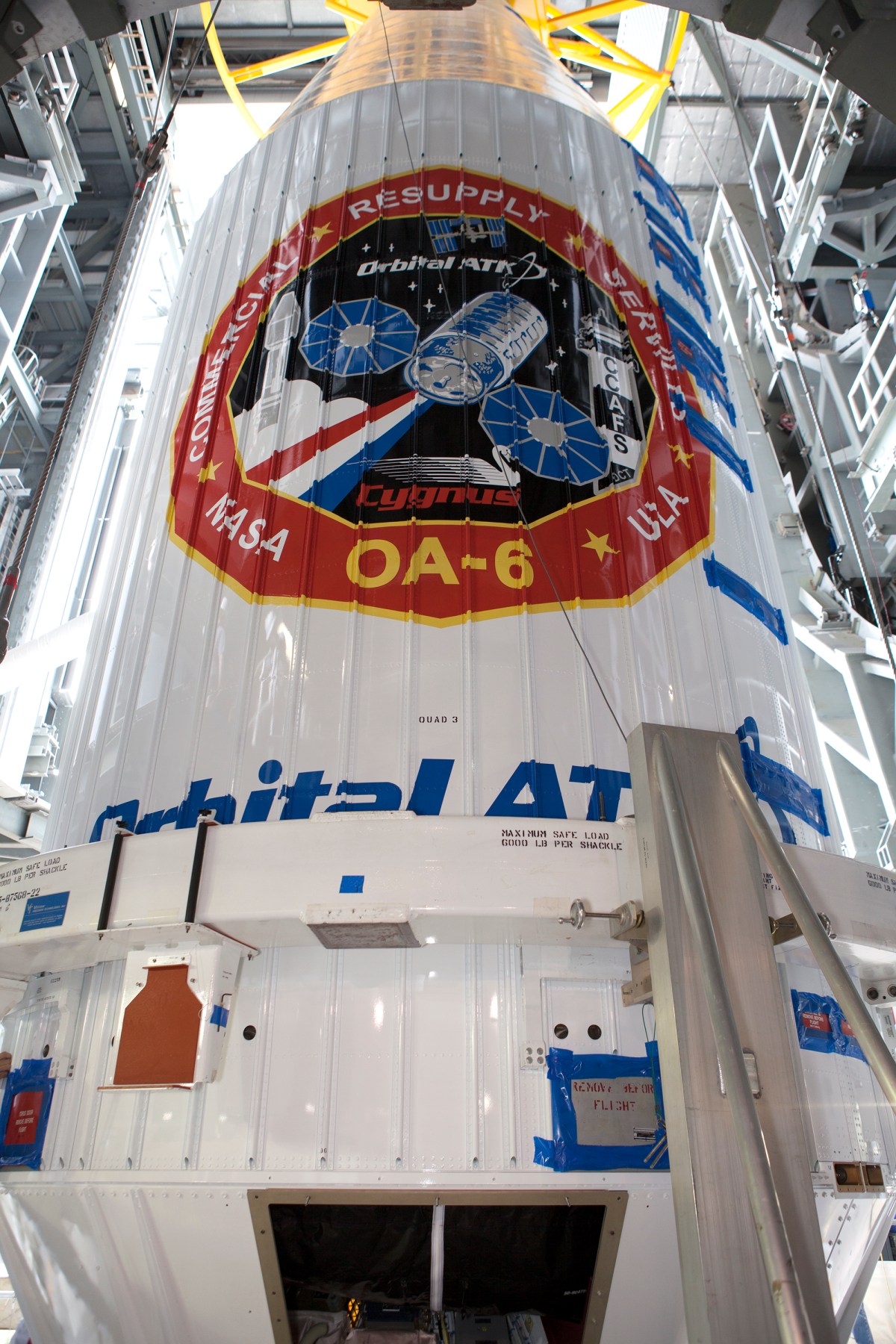
 Engineers hoisted the Orbital ATK Cygnus spacecraft and bolted it to the top of a United Launch Alliance Atlas V rocket as preparations continue on pace to launch the cargo mission to the International Space Station on Tuesday, March 22, during a 30-minute launch window that begins around 11 p.m. EDT.
Engineers hoisted the Orbital ATK Cygnus spacecraft and bolted it to the top of a United Launch Alliance Atlas V rocket as preparations continue on pace to launch the cargo mission to the International Space Station on Tuesday, March 22, during a 30-minute launch window that begins around 11 p.m. EDT.
Working inside the Vertical Integration Facility at Space Launch Complex 41 in Florida, the engineers used the service structure crane to lift the Cygnus – tucked inside the protective payload fairing for flight – into place. The complete launch vehicle and fairing measure 191 feet tall. It will take about 21 minutes from launch for Cygnus to fly on its own in a precise orbit to catch the station. The Cygnus is automated to fly without crew members aboard. It will steer itself to a position within reach of the station’s 55-foot-long robotic arm. At that point, station astronauts and ground controllers will grasp the vehicle and position it in place on the Earth-facing port of the Unity module.
Then astronauts will unload more than 7,000 pounds of hardware including experiments geared toward unlocking the answers to long-duration spaceflight that crews will encounter in a future journey to Mars. Station research also focuses on solving problems of those on the Earth by using the unique orbiting laboratory for novel experiments across a wide range of disciplines.

